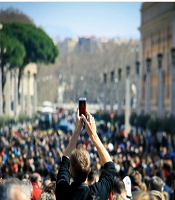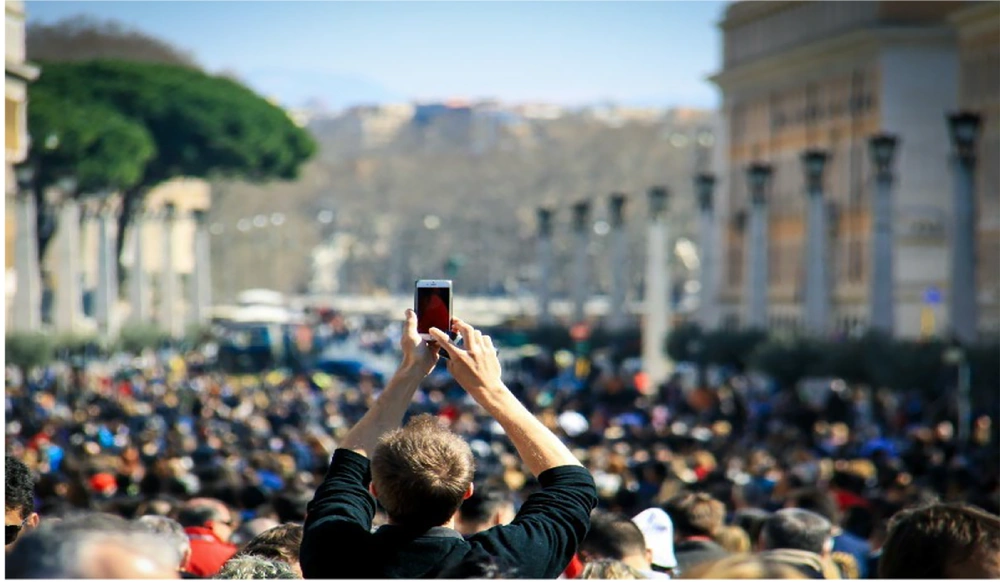Dear Editor,
Mass gatherings are organized or spontaneous occasions in which a large number of individuals gather at a specific location and time for various reasons, including sports, religious, political, social, or cultural purposes. The presence of the massive population in these events can cause crowd-related problems, which sometimes lead to deaths and acute injuries (1). Historically, catastrophic incidents have occurred due to poor crowd management at mass gatherings, with some examples including the Hillsborough Stadium incident in England (1989), the Sabarimala Temple occurrence in India (2011), and the Mina disaster in Saudi Arabia (2015) (2-4). To prevent the recurrence of such unfortunate events, it is necessary to adopt preventive strategies and convenient tools to improve crowd safety. Currently, instruments such as drones and closed-circuit television (CCTV) are used to monitor crowds in mass gatherings. Although this equipment is highly efficient and important, it is prone to human errors, limited by time and location, and relatively expensive (5). Therefore, integrating such tools with technology-driven solutions could significantly promote crowd management efficacy in mass gatherings.
This letter aims to highlight the significance of adopting novel and technological approaches to promote crowd management in mass gatherings. Among these approaches, social media has emerged as a potent innovation due to its widespread access, real-time communication, and affordability. This letter briefly addresses the different applications, strengths, and challenges of social media in crowd management at mass gatherings. In addition, this letter provides practical suggestions for better utilization of social media by managers and policymakers involved in mass gatherings.
In recent years, social media platforms have demonstrated a wide range of valuable applications in managing various aspects of mass gatherings, including crowd control. They play a significant role in this field by rapidly disseminating information regardless of time, place, or environmental conditions, and at a much lower cost. Another key application of social media in mass gatherings is the use of artificial intelligence algorithms and data analytics to analyze messages posted by attendees on social media, to understand public sentiment and predict the emergence of potentially dangerous behaviors. This capability enables disaster managers to identify early signs of tension or potential unrest by assessing the emotional state of the attendees. For example, a study by Chang showed that the analysis of sports spectators' comments posted on Twitter can effectively predict collective sentiment during these events and serves as a valuable indicator of the risks associated with mass gatherings (6, 7).
Social media, with its direct and person-to-person nature, allows disaster managers to communicate directly and transparently with the public during mass gatherings. Social media enables one-to-one, one-to-many, many-to-many, and many-to-one communications, making it a suitable platform for different interactions between disaster managers and the public. Disaster managers can use social media to provide necessary warnings to the public and to communicate information such as local geographic maps, essential instructions, and dangerous crowded areas to users in an effective manner. By analyzing user-generated data such as text content and geo-tagged images, disaster managers can identify crowded areas, predict crowd distribution patterns, estimate population size or density, and provide guidance for safer routes (8, 9). Creating coordination between responsible organizations during mass gatherings, by providing real-time information and accelerating effective and coordinated relief responses, is another capability of social media in managing the crowding of such events (10) (Figure 1).
A Participant at a mass gathering using a smartphone to capture and share the event (11)
Contrary to their great potentials, social media platforms confront serious challenges such as the rapid dissemination of misinformation and rumors, which can cause fear, general concern, reduce public trust in governmental authorities, and interrupt emergency response operations. Another important challenge is privacy and data protection. The use of user-generated content and posts published on social media for crowd management measures should be based on users' informed consent. Therefore, adherence to legal and ethical considerations is crucial for the responsive and effective application of social media technologies in emergency contexts such as mass gatherings (12, 13).
Since the effective use of social media can play a key role in managing mass gatherings, it seems essential to provide practical suggestions to policymakers and managers in this field for the optimal application of this tool. Based on the evidence and previous studies reviewed in this letter, some practical suggestions are briefly mentioned for the effective use of social media in crowd management in mass gatherings:
- Enhance general population media literacy
- Develop ethical and legal frameworks to protect user data
- Launch and evaluate pilot projects for using social media in emergencies
- Establish social media monitoring units within emergency management centers
- Train disaster managers in digital communications, social media, and data analytics
- Develop interdisciplinary research studies in the field of social media and mass gatherings
- Create location-based early warning systems to deliver real-time information in emergencies
- Establish communication protocols for emergencies (including messaging coordination, platform selection)
- Improve inter-agency collaboration (such as emergency medical services, security units, humanitarian workers, etc.)
- Adopt artificial intelligence-based technologies and data analysis methods to predict crowd behavior (7-10, 12, 14, 15)
Despite the great potential of social media in crowd management in mass gatherings, more research and field evaluations are needed to measure the real effectiveness of these technologies. Continuous feedback from social media users and disaster managers is also essential to improve existing solutions. Successful use of social media requires interdisciplinary collaboration between researchers, managers, policymakers, and stakeholders. Increasing media literacy and establishing appropriate legal and ethical frameworks are important requirements in this regard. In addition, continuous evaluation of policies adopted to reduce negative consequences is also essential. Now it is time to recognize social media not merely as a threat, but as a transformative tool, which can significantly enhance the safety and quality of mass gatherings.

